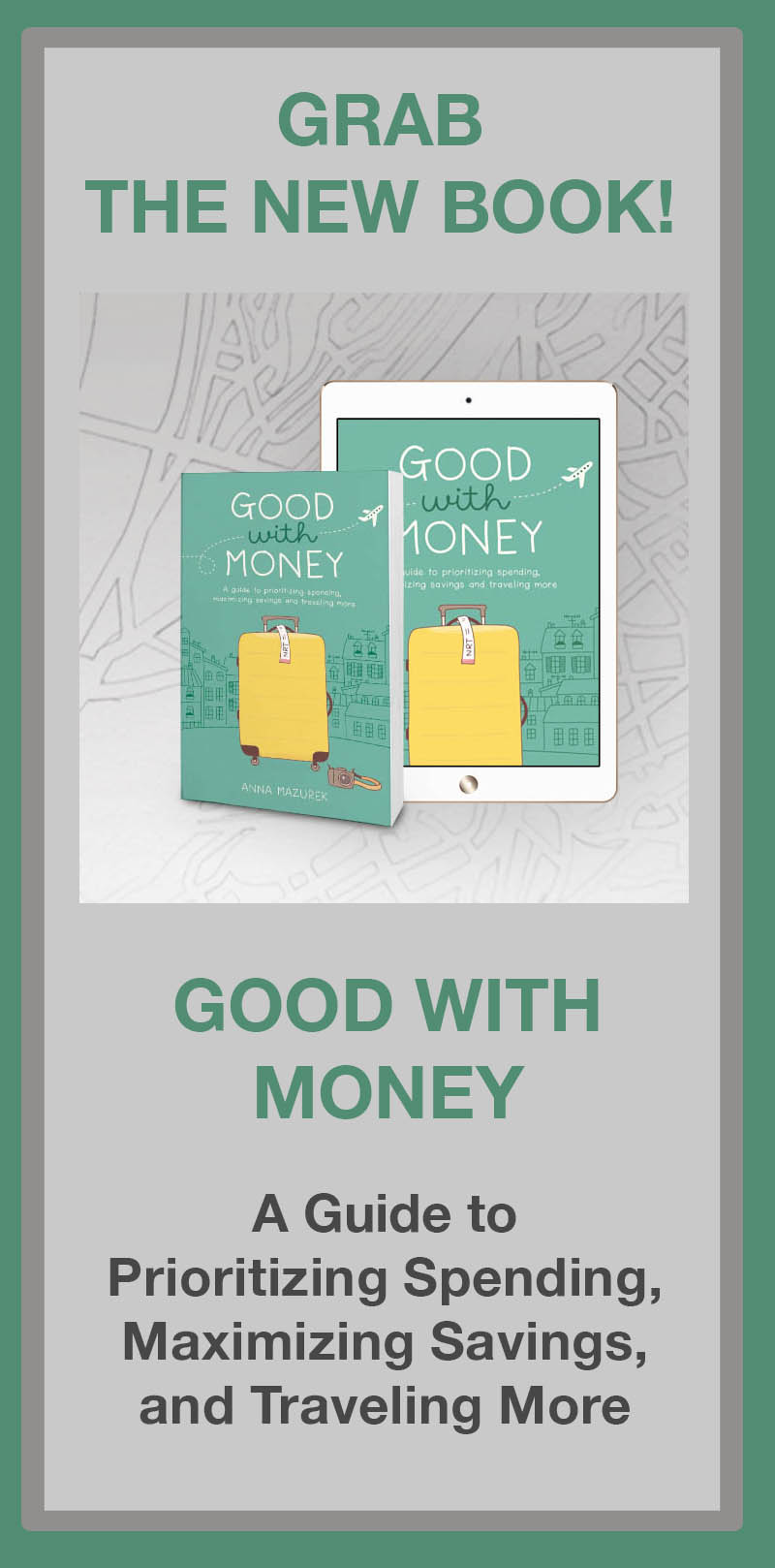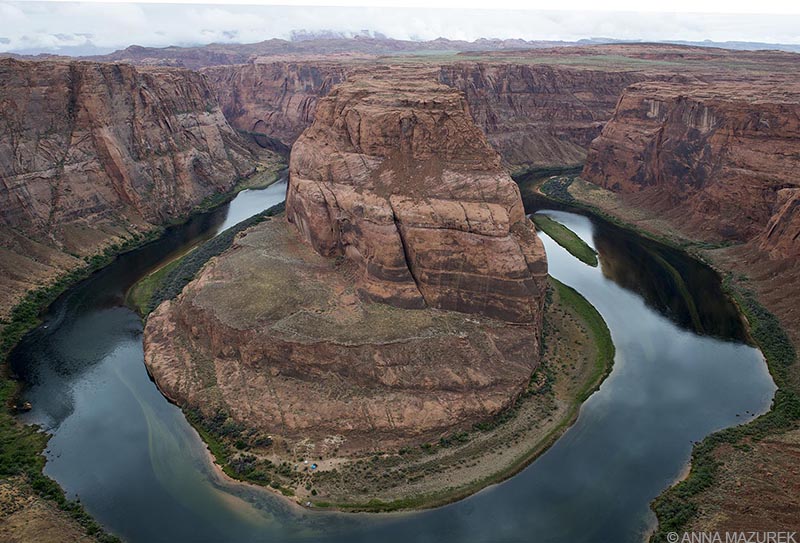
Horseshoe Bend near Page, Arizona
Next month, I’ll visit my 50th country and will have 51 by the end of the summer. During the last decade of nonstop travel, there’s so many amazing moments that I’ll never forget and others I wish I could forget including the horrific amount of pollution I’ve seen during my adventures.
Every time I see a plastic bag I remember that field outside Uyuni, Bolivia that was covered in a blanket of plastic. The bags were snagged on bushes and fluttering in the wind like a tattered flag. I know I can’t solve the problem on my own, but this post is another way for me to help and raise awareness. This post was inspired by my recent trip to the Galapagos and by National Geographic’s June 2018 cover story that focuses on the dangers and growing epidemic of plastic pollution.
The NPR program On Point recently interviewed the author of the National Geographic story, which you can listen to here.
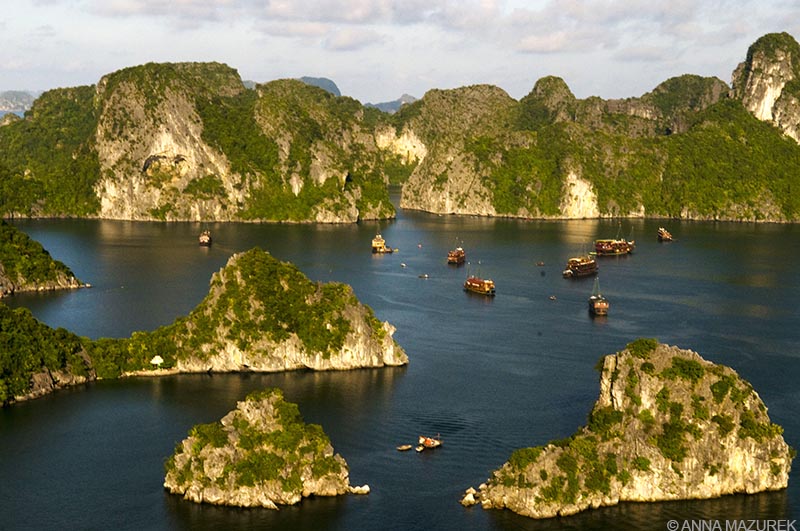
Ha Long Bay is one of Vietnam’s stunning sights. Half of the world’s “mismanaged” plastic waste comes from five Asian countries including Vietnam according to National Geographic.
The Facts
It’s easy to say that plastic is evil, but that’s not entirely true. Plastic saves lives in many forms – air bags, medical devices and water filters. It’s the single-use plastics that are causing the pollution epidemic that’s tainting the oceans and killing wildlife. Plastic bags are one of the main culprits. Many animals especially turtles often mistake plastic for jellyfish, one of their main food sources. A pilot whale in Thailand recently died because it starved to death due from 17 pounds of plastic in its stomach, which included 80 plastic shopping bags.
A few highlights from the National Geographic story:
- Roughly, 5.3 -14 million tons of unrecycled plastic ends up in the ocean each year.
- Plastic can take 450 years to biodegrade. Some items will never biodegrade.
- 40% of the plastic produced every year is disposable
- Only 10% of the plastic in the U.S. is recycled
- Less than 1/5 of all plastic is recycled worldwide
- Five countries in Asia are responsible for half of the world’s “mismanaged” plastic waste: China, Indonesia, Vietnam, Philippines and Sri Lanka
- Greenpeace states that litterbugs and large companies like Unilever and Nestle who promote the use of single-use plastics are the main culprits
- Public calls for action are swaying the minds of major corporations like Coca-Cola, PepsiCo, Amcor and Unilever to make environmentally friendly changes to the products/polices
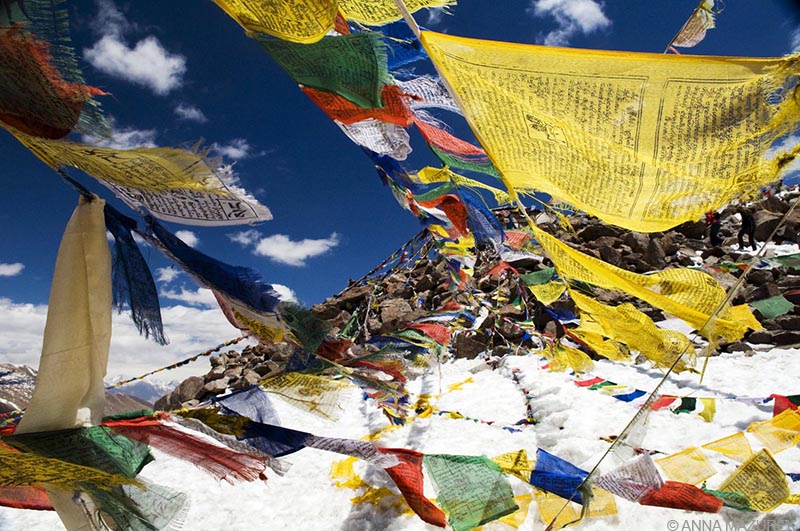
Khardung La is located in the Ladakh region of India and is one of the places where plastic bags have been banned.
Plastic Bag Bans
Many countries have banned plastic bags including Italy, Bangladesh, China and parts of Africa including the Congo, Rwanda, South Africa and Kenya, which has the most drastic ban. In the U.S a few states (North Carolina and Hawaii) and large cities have done the same including San Francisco, Los Angles, Austin (my current home base) and Portland. States in rural India and Australia have also joined the movement.
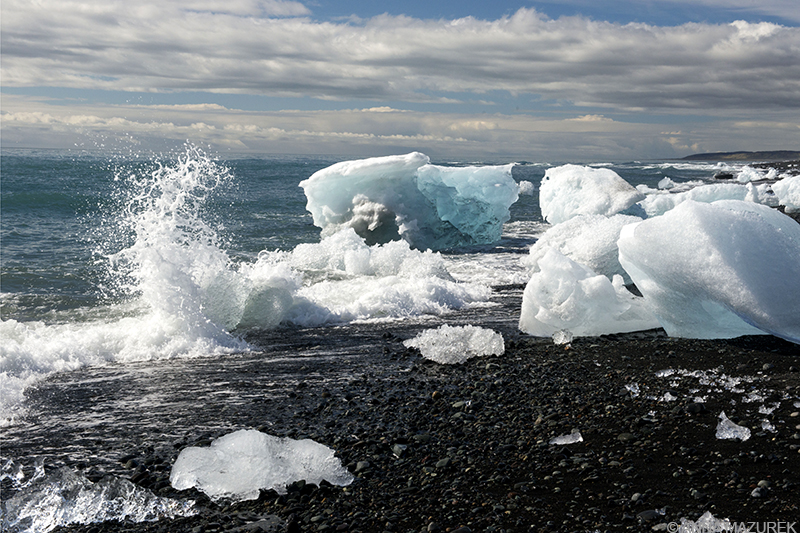
Changing your habits and pressuring big companies to produce more eco-friendly products is a good way to ensure the oceans stay as pristine as Jokulsarlon Glacier Lagoon in Iceland.
14 Ways You Can Help
I’ve compiled a list of easy ways to help the environment both in your hometown and during your travels. By making these changes in your life, you can inspire others to do the same by leading by example. Most of these tips will also save you money, which is an added bonus! Plus, the products mentioned are all less than $20!
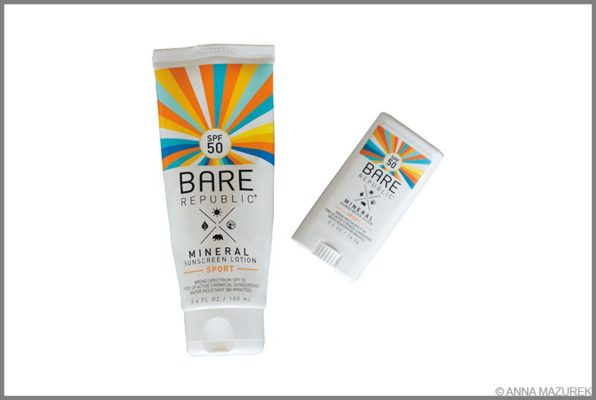
Bare Republic natural sunscreen is sold at Target and available on Amazon. I use both the liquid and the SPF stick pictured.
1. Natural Sunscreen
Chemical sunscreens are one the main causes of coral reef bleaching and are set to be banned in Hawaii’s Waikiki Beach by 2021.The main culprit is the FDA-approved chemical Oxybenzone. The UVA and UVB absorbing chemical has also been linked to breast cancer and birth defects. The best alternative are natural sunscreens with zinc and titanium dioxide, which are better for the ocean and your body. These natural sunscreens are very easy to find and often most children’s sunscreen only contain these ingredients. I’ve been using Bare Republic’s natural sunscreen, which has zinc and titanium dioxide for the past few years. You can buy it at Amazon and Target. It smells really nice and goes on pretty clear.
2. Biodegradable Soap
I’m a huge fan of Dr. Bronner’s Pure-Castile Soap. This multipurpose soap is biodegradable, efficient and smells amazing! It’s made with organic oils and natural ingredients. It’s a very concentrated formula so a little goes a long way. It’s sold in both liquid and bar forms with various scents like peppermint and lavender. It’s a super handy thing to have when traveling. I’ve used it as dish soap and laundry detergent. There are other types of biodegradable soap so choose the kind that’s best for you!
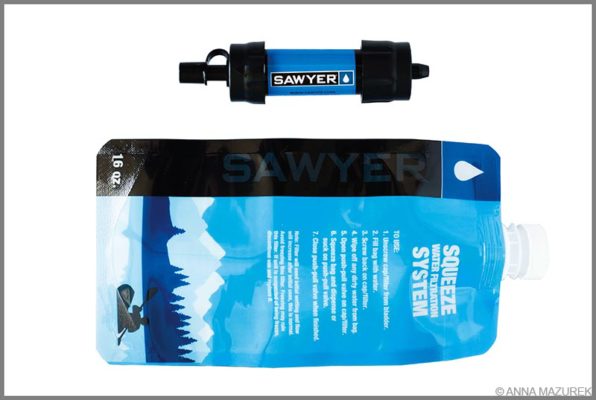
The Sawyer MINI water filter has saved me hundreds of dollars. It’s lightweight, easy to pack and clean.
If you are visiting a country where the tap water isn’t safe to drink, filter your own water instead of buying bottled water. Many developing countries don’t have the infrastructure to recycle or even handle the waste from plastic water bottles. Asia accounts for a large amount of plastic in the ocean. Don’t add to the epidemic! Buy a water filter. For the past five years, I’ve used the Sawyer MINI water filter across the world including Mexico, Tanzania and Bolivia. It works everywhere except for places that have heavy metals in the water. This filter alone has saved me hundreds of dollars during my travels and saves the environment from plastic. It costs roughly $20.
4. No Plastic Straws
Single use plastics are the number one cause of plastic pollution and 50% of them are made in the U.S. Avoid using straws at restaurants. If you have medical needs or have children, use an alternative paper or metal straws that are much more environmentally friendly. Many restaurants are even making the switch to only offer straws by request!
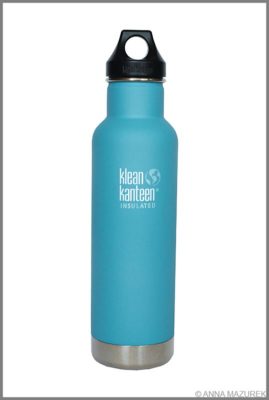
Klean Kateen is the best insulated stainless steel water bottle on the market. (No offense to YETI, but there bottles are too bulky and don’t have good travel lids.)
5. Reusable Water Bottle
On my Galapagos boat trip, everyone was given a reusable stainless steel water bottle to use during the trip. I personally love and prefer my insulated Klean Kateen water bottle that I’ve had for years. It cost $20, and I’ve had it for years. While BPA-free plastic Nalgene water bottles are lighter weight and great or hiking, the stainless steel ones are easier to sanitize with hot water. I use Nalgene’s for long hikes and insulated stainless steel bottles for everything else.
6. Reduce Paper Usage
Avoid picking up brochures and physical guidebooks. Opt for digital copies or photograph a brochure instead taking one with you. Most tourist brochures are available online. Download offline maps using Google maps or Maps.me (my favorite GPS map app!). If you do need paper products, then recycle them properly.

I LOVE this reusable llama bag from BAGGU. They are only $10 but I got mine on sale for $8 at Christmas. They have solid colors and other funky animal prints besides llamas.
7. Reusable Shopping Bags
I live in Austin, Texas where plastic bags are banned. You either bring your own bag or buy a reusable one at the register. Why is this not a national law? I keep a reusable Baggu shopping bag in my purse always and always travel with it. It’s lightweight and can hold up to 50 pounds! I also have a bag of reusable bags in the truck of my car for large shopping trips.
What if you forget your reusable bags?
My parents live in a small town outside of Columbia, SC. It’s been a nightmare trying to get them to switch to reusable bags. My mom’s main excuse: I always forget my bags. If you forget them, then go back to your car and get them like I do. After a while, it’ll be a habit, and you’ll never forget them. If I do forget mine, I checkout and put my items back in the cart then take the cart to my car and bag everything myself at my car.
8. Don’t Buy Plastic Q-Tips
There’s an alarming photo of a sea horse swimming with a pink plastic cotton swap on page 47 of the June issue of National Geographic. The good news is that Johnson & Johnson, who produces the Q-Tip brand, has committed to switching back to all paper stems in the coming years. If you buy store brand cotton swabs like I do, only buy the paper! I’ve been doing this for years, and it’s worth the extra few cents!
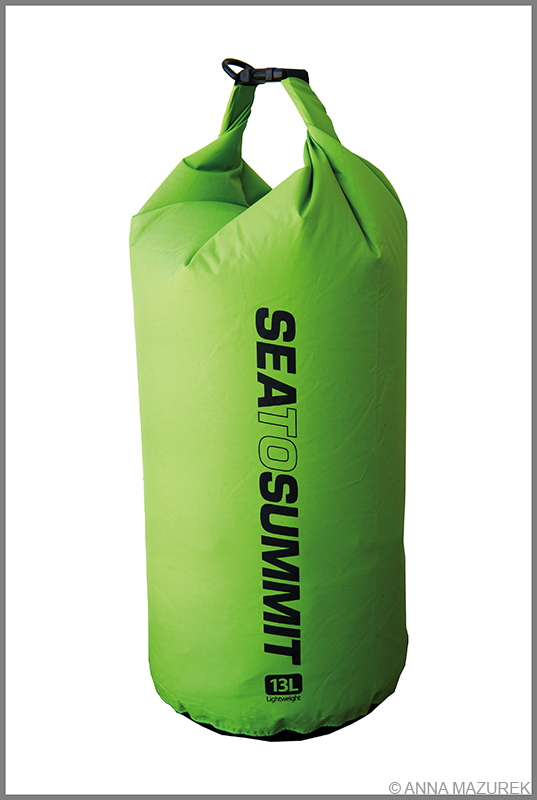
I’m a fan of these lightweight dry sacks for everyday use. I use this for my camera just in case it starts to rain and keep it in my backpack along with my rain covers. The ultra-light dry sacks rip too easily and the thick ones are too rigid because they are meant for rafting trips.
Ziploc bags are the thing I struggle to stop using. They are so useful at times for food and packing especially for wet items. Dry sacks are the best eco-friendly alternative for Ziplocs when you have wet things or want to prevent things from getting wet. I also started packing reusable plastic-lined toiletry bags. I’m using several now that I randomly found at my parent’s house. I bought the13 liter lightweight Sea to Summit dry sack in the photo earlier this year for $20 at REI.
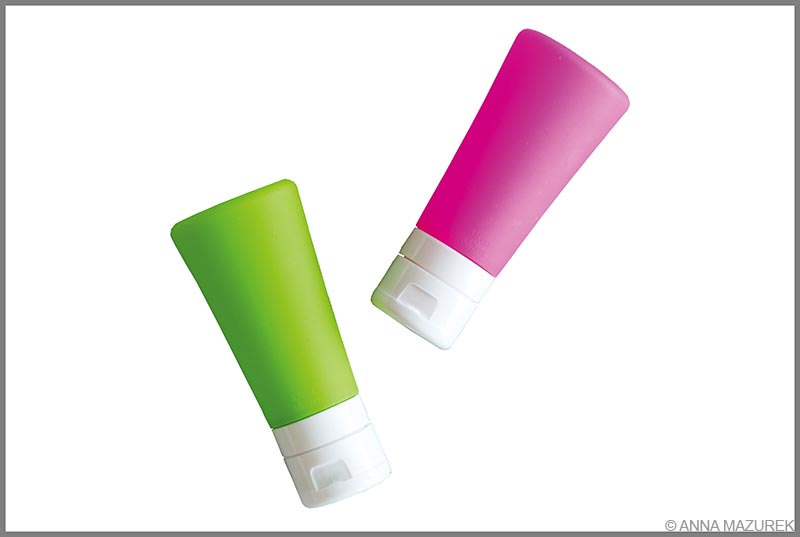
These reusable toiletry bottles are only a few dollars at Target. Simply refill them with your normal shampoo or conditioner.
10. Avoid Single-Use Plastic Packaging
Buy items in bulk sizes to reduce plastic waste. Travel with bar soap instead of liquid. Use reusable toiletry bottles when you travel. Avoid plastic plates or cups. Consider getting camping plates or BPA-free reusable camping sporks for your travels. Support companies that use packaging made from recycled or environmentally friendly materials.
11. Pyrex or BPA-Free Plastic Food Containers
I flew to Boston last weekend with a sandwich in my carryon in a Rubbermaid BPA-free reusable plastic sandwich container. I try more and more in my daily life and travels to avoid plastic bags especially Ziplocs. When I pack my lunch for work or road trips, I always used glass Pyrex containers or BPA-free reusable plastic containers. Both are inexpensive and easy to find.
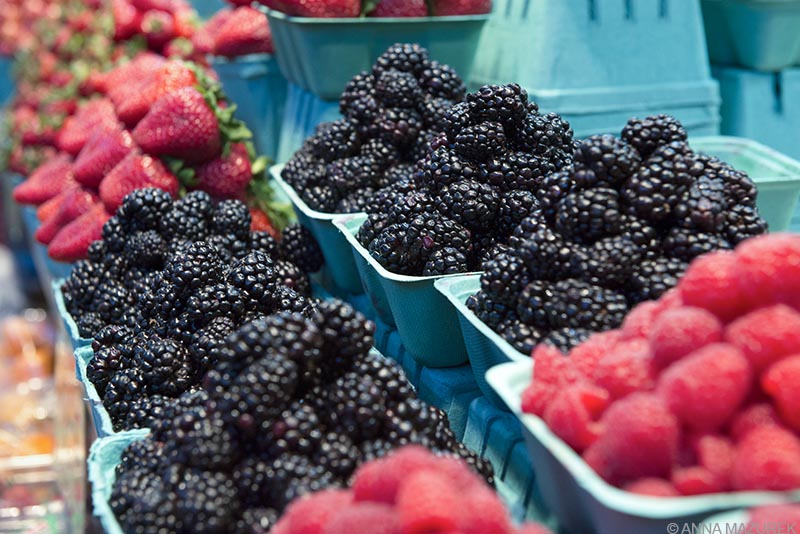
Buying locally from farmer’s markets like this one at the Granville Island Market in Vancouver, Canada is a great way to support the local economy and reduce fuel usage needed to transport food.
12. Eat Locally
Avoid eating at chain restaurants when traveling. Eating locally cuts the cost of transit and supports local communities. Plus, the food is fresher and less likely to be processed.
13. Recycle & Conserve Resources
Most places have recycling services or bins on the street. Keep an eye out and use them as much as possible. Earlier this year, I rented an apartment for a month in Buenos Aires, which didn’t have recycling in the building so I collected my recycling and took it to the recycle bins on the street myself. Bring your own toiletries like the earth-friendly ones listed above instead of tiny ones at hotels. Reuse your towels and cut off the lights/air conditioning when you leave the room. (If the idea of cutting off the a/c completely scares you, then turn it up to at least conserve energy.) Do all the things you would do if you were paying the utility bill.
14. Take Public Transport
If public transit is a safe method of transport when you are at home or abroad, use it! By using public transport, you are reducing your carbon footprint and minimizing traffic congestion on highways.
____________________________________________________
I am not sponsored by any of the brands or products mentioned above. I have used all the products myself and found them extremely helpful. Please note some Amazon and REI affiliate links are included above. If you click on the link and make any type of Amazon/REI purchase, I earn a small commission with no additional cost to you. I hope you found this post helpful and appreciate your support of the blog. Please email me if you have questions.
____________________________________________________
COMING UP NEXT
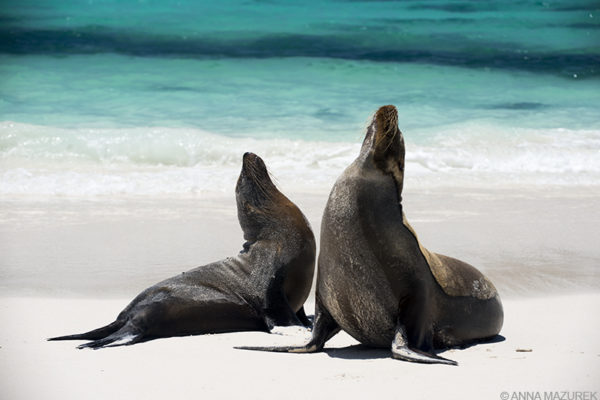
Photo Guide to the Galapagos
I will continue the eco-friendly theme with my next post about the Galapagos Islands, one of the most pristine environments in the world. This will be a photo heavy post focused on the wildlife and various highlights to the oldest islands in the Galapagos!

